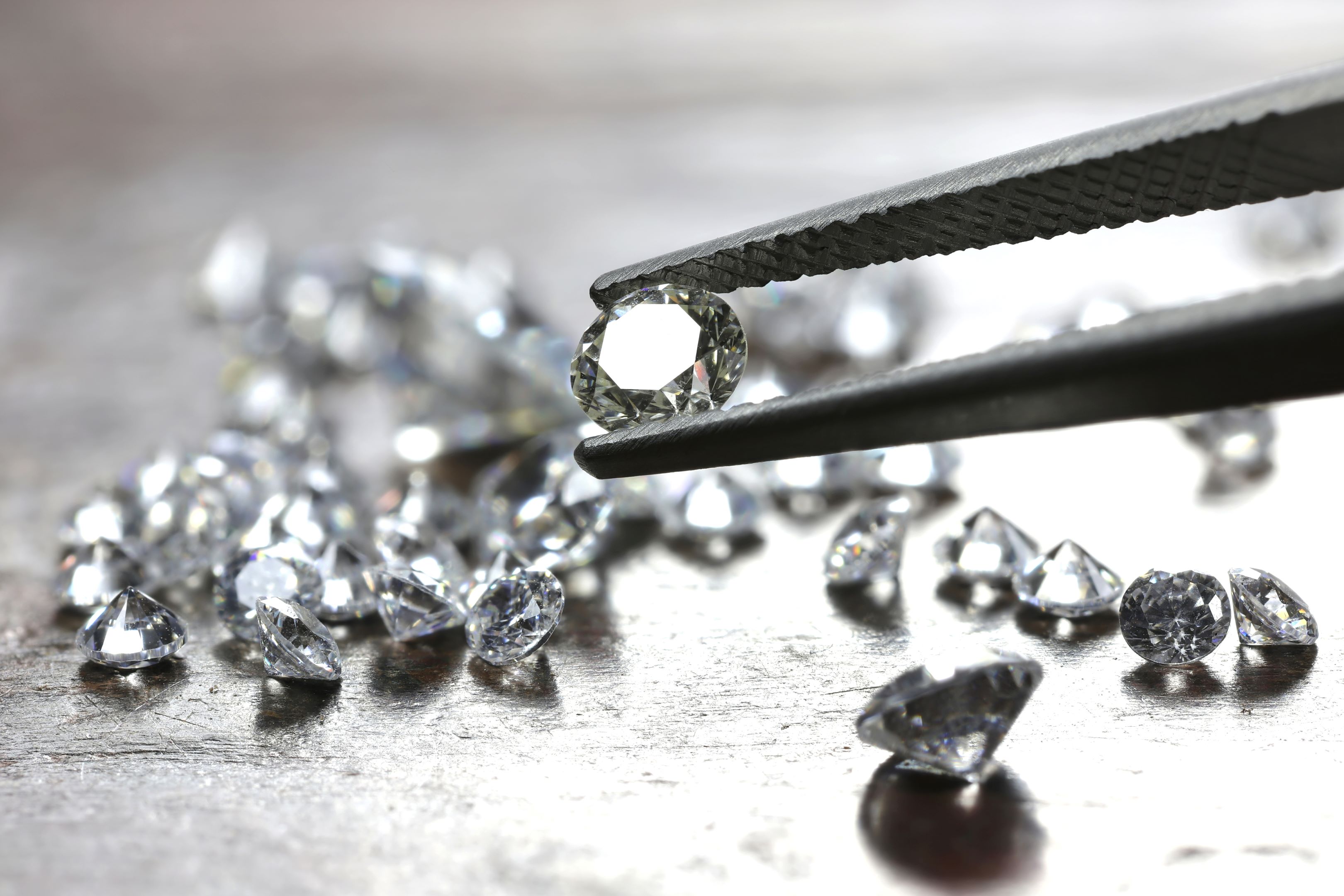
This weekend sees the coronation of King Charles III and Queen Camila. Both will be wearing crowns that get much of their sparkle from diamonds. Indeed, the Imperial Crown and the Queen Mary Crown the royal couple will be wearing carry in excess of 4,500 diamonds between them.
Diamonds are formed by extreme pressure under the earth, which results in them being 58 times harder than any other material on earth. But although they are the toughest, they are not the rarest of gems.
While all gems are rare, diamonds are arguably among the most common of gems. Rubies, emeralds and sapphire are certainly rarer and can therefore be more valuable.
The perception of diamonds as being so valuable is based on the work of De Beers, which is responsible for both a genius piece of marketing and a tightly controlled diamond supply chain.
Forever gems
De Beers helped promote the desirability of diamonds with its “A diamond is forever” marketing campaign, which grew the market in the US alone from $23m in 1939 to £2.1bn in 1979. Today, around 80% of brides wear a diamond engagement ring.
While most diamonds are used for jewellery and adornment, their properties mean they also have plenty of other uses.
Their hardness makes them ideal for drill bits in mining and for drilling in dentistry. Diamond powder is also used for grinding and sharpening tools.
In electronics, high-end audio speakers use slivers of diamond to ensure sonic fidelity, and diamonds are increasing used in computers.
Grow your own
Amazon recently announced it had joined hands with a unit of De Beers Group to grow artificial diamonds that it claims will be used in quantum computing “within years”.
The move will make data more secure, and the widespread use of quantum networking will require a massive number of components, including specialised diamonds.
According to the FT, lab-grown diamonds are being touted as “green”, because they use technology that extracts carbon from the atmosphere, even though the amount of that carbon is actually very small.
Critics claim that the energy required to produce lab-grown diamonds makes the green assertion fallacious. Diamond Foundry, in Extremadura, south-west Spain, has countered this by building a diamond manufacturing plant based on solar power, which it also plans to store excess power in second-hand car batteries for later use.
Synthetic diamonds are a growing sector of the market, although they are primarily used for industrial purposes rather than jewellery.
Diamond trade
The global diamond trade was worth $95bn in 2021 and is projected to reach $140bn by 2030, growing at 4.4% CAGR, according to Straits Research.
Since the 1870s, most of the world’s gem-quality diamonds have been mined in Africa and the core of natural gem-quality diamond production remains there.
However, production in Russia and Canada has grown rapidly in recent years. Canada’s growth is relatively recent, stemming from discoveries in the 1990s. Its mines tend to be in remote areas with difficult mining conditions and some have already closed.
The biggest producers of diamonds in 2022 were:
- Russia
- Botswana
- Democratic Republic of Congo
- Australia
- Canada
- South Africa
According to the OEC, in 2021, diamonds were the world’s 24th most traded product, with a total trade of $114bn.
Between 2020 and 2021 the exports of diamonds grew by 55.6%, from $73.5bn to $114bn.
Trade in diamonds represents 0.0054% of total world trade.
Countries that export the most diamonds are not necessarily the largest producing countries. This is due to different countries importing diamonds to polish and prepare to turn them into consumer goods to then export.
In 2021 the top exporters of diamonds were:
India $26.3bn
Belgium $13.9bn
UAE $13.6bn
US $12.1bn
Israel $9.06bn
The top importers were:
India $26bn
United States $18.2bn
Hong Kong $14.6bn
Belgium $13.7bn
UAE $13.6bn
Fragmenting market
De Beers held a 90% share of the market as late as the 1980s, but this began to break down due to a number of developments such as Russia selling to other suppliers, which led to other producers following suit, and the discovery of new deposits in Canada, which also chose to sell independently.
Mining reports that Botswana is further threatening De Beers’ status as a major player by arguing that it may not renew a five-decade sales agreement if it doesn’t receive a larger share of rough diamonds to its gem trading company.
Botswana wants to move up the supply chain by building higher value midstream capabilities for polishing diamonds rather than simply mining them.
Botswana has acquired a 24% stake in Belgian diamond processing firm HB Antwerp and its co-founder Rafael Papismedov has said that a revised deal would help Botswana break free from the current model which he described as based on colonial principles.
Russian sanctions
Further supply chain upheaval could come in the shape of possible sanctions of Russian diamond trade by the EU, reports Politico.
G7 countries are pushing ahead with plans to agree to ban sales of Russian diamonds when the group’s leaders meet for a summit this month, amid growing hopes that new technology will enable authorities to track the gems around the world.
Swiss company Spacecode claims a new device can identify which region of the world individual diamonds come from, which it has called the diamond’s DNA.
While elsewhere, a certification known as the Kimberley Process aims to prevent diamonds from conflict areas entering the market. Today, 74 countries are members of the Kimberley Process, ensuring that more than 99% of diamonds are from conflict-free sources.



